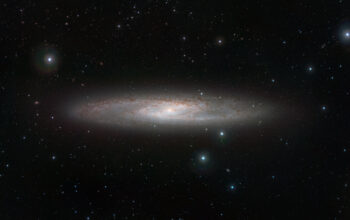In the grand tapestry of the cosmos, black holes are often perceived as enigmatic voids, possessing the uncanny ability to devour everything in proximity, including light itself. This inherent nature has led to their colloquial designation as “cosmic thieves.” Yet, what if we were to approach this characterization with a playful provocation? Could it be that black holes, while seemingly parasitic in their operation, also possess a regenerative function for the universe at large? This inquiry beckons a deeper exploration into the dualistic role black holes may play in cosmic evolution.
At the outset, it is crucial to examine the fundamental mechanics that govern black holes. Formed from the remnants of massive stars post-supernova, black holes are classified into three primary categories: stellar, supermassive, and intermediate. Each type is defined by its mass and the processes that led to its formation. Stellar black holes, for instance, emerge from the gravitational collapse of a singular star, whereas supermassive black holes, which exist at the centers of most galaxies, can contain millions to billions of solar masses. The gravitational pull of these behemoths is so profound that even the most agile photons are ensnared, leading to their invisibility against the cosmic backdrop.
However, the narrative surrounding black holes is often curtained in fear and fascination. They are viewed as harbingers of doom, capable of obliterating nearby celestial bodies. This perspective may obscure an important fact: black holes are integral to the genesis of new celestial structures. Their formation facilitates galactic dynamics in ways that may not be readily observable. For instance, the influx of matter into a black hole generates immense energy, manifesting as high-energy jets and emissions that can influence star formation in adjacent regions of space. These phenomena suggest that rather than acting solely as cosmic thieves, black holes function as cosmic architects, reshaping their environments through gravitational interactions and energetic outputs.
In order to articulate the extensive implications of black holes on cosmological development, one must delve into the concept of accretion. The process of accretion involves the accumulation of matter around a black hole as it interacts with its surrounding environment. This behavior can lead to the formation of an accretion disk, a swirling mass of gas and dust drawn into the black hole’s gravitational well. The kinetic energy generated in this disk results in the emission of radiation, often seen in the form of X-rays. This radiation can serve as a catalyst for star formation in the nearby interstellar medium, suggesting an active role of black holes in nurturing the universe’s very building blocks.
Furthermore, the study of black holes contributes significantly to our understanding of fundamental physics, particularly in the realms of general relativity and quantum mechanics. The paradoxes associated with black holes have led to profound inquiries regarding the nature of singularities and the information loss dilemma. This ongoing discourse posits a challenge: if information is indeed lost within the event horizon, how can we reconcile this with the tenets of quantum theory that stipulate information must always be conserved? The resolution of these quandaries may pave the way for groundbreaking theories that unify the realms of macroscopic astrophysics with quantum phenomena, thereby yielding a holistic understanding of the cosmos.
An intriguing aspect of black holes is that they are not isolated entities; they are intertwined within the fabric of the universe, influencing and being influenced by the cosmos at large. The existence of supermassive black holes has been implicated in the regulation of galaxy formation and evolution. The relationship between star formation rates and black hole mass shows a curious correlation; as black holes grow, the galaxies around them undergo significant changes in their structural dynamics. This interplay raises the question: do black holes act as regulatory mechanisms within the universe? One could envision them as cosmic “conservators,” striving to maintain equilibrium amidst the vast expanses of cosmic chaos.
Moreover, the observable remnants of black holes — such as quasars — afford a spectacular glimpse into their influence on cosmic evolution. Quasars, the luminous active galactic nuclei powered by accreting supermassive black holes, provide critical evidence for the impact that black holes extend across vast distances. They illuminate our understanding of the early universe and the formation of the first galaxies while serving as guiding beacons in the exploration of cosmic structures. These phenomena compel us to recognize that black holes, while capable of gravitational theft, also embody the catalysts of creation and transformation.
In summation, the characterization of black holes as cosmic thieves invites us to ponder their more complex roles within the universe. While initially appearing as arcane voids of destruction, deeper exploration reveals their multifaceted contributions to cosmic dynamics and evolution. They play an instrumental role in star formation, regulate galactic structures, and challenge our existing paradigms of physical law. As the enigma of black holes unfolds, it encourages a broader philosophical discussion regarding the cyclical nature of creation and destruction in the universe. Thus, we may ultimately presume that black holes are not just harbingers of doom; they are vital architects of cosmic continuity, reshaping the universe by their presence and absence alike.









